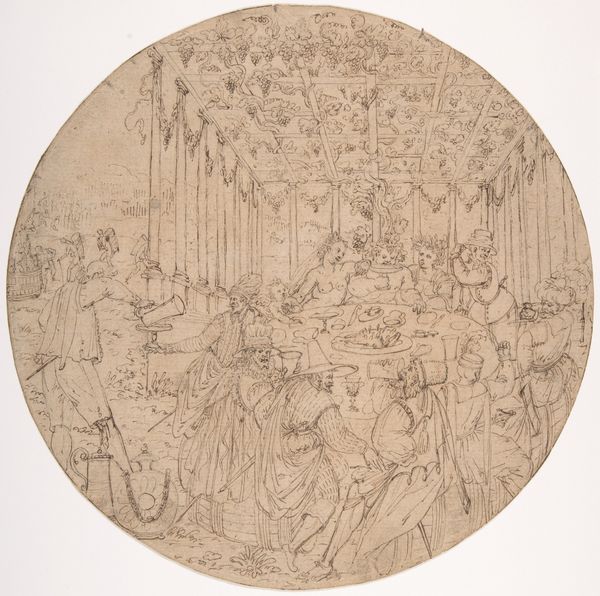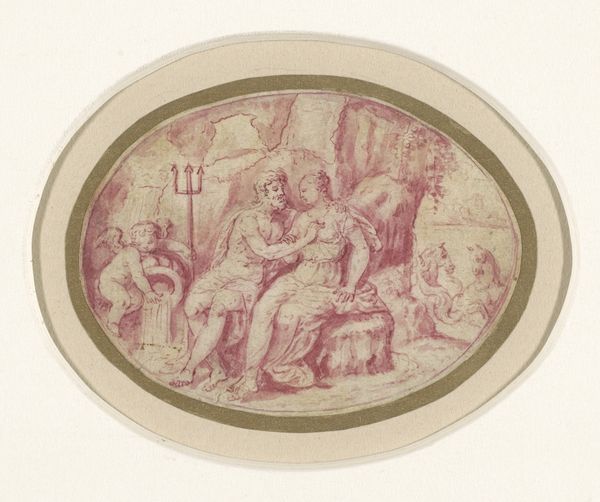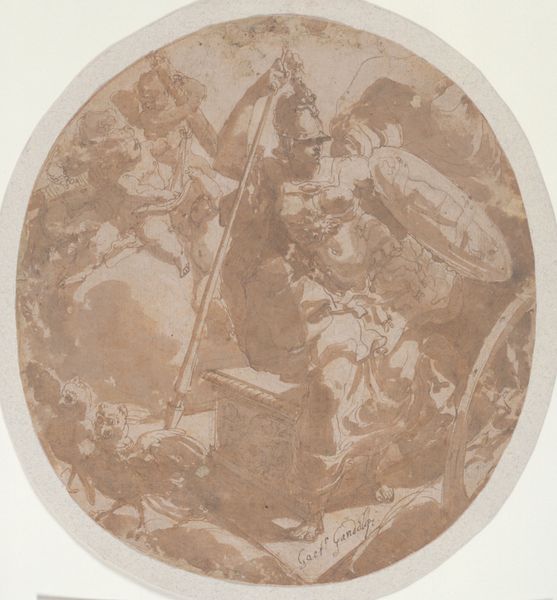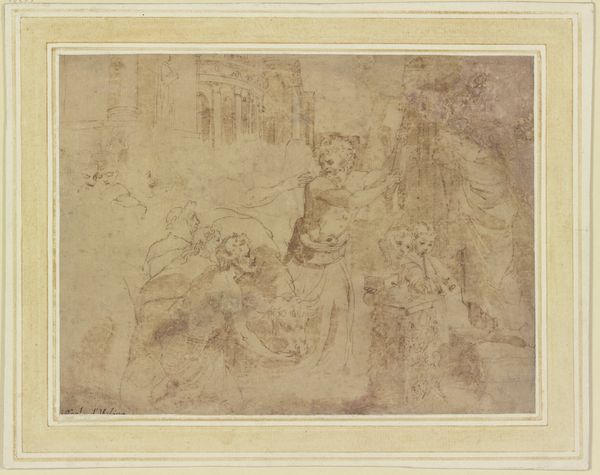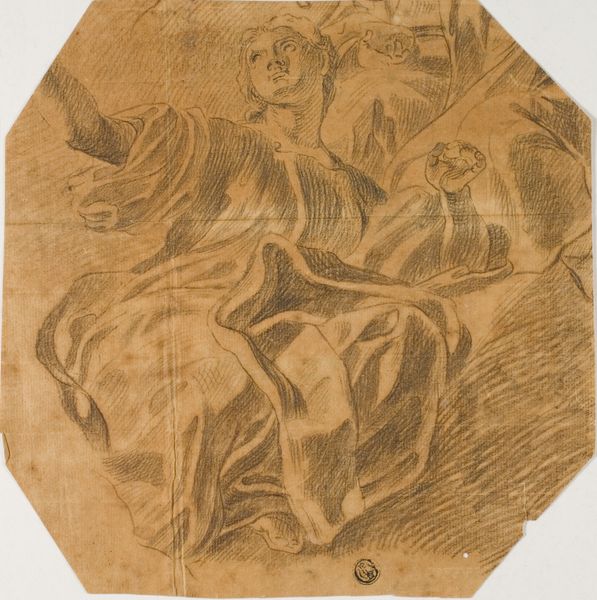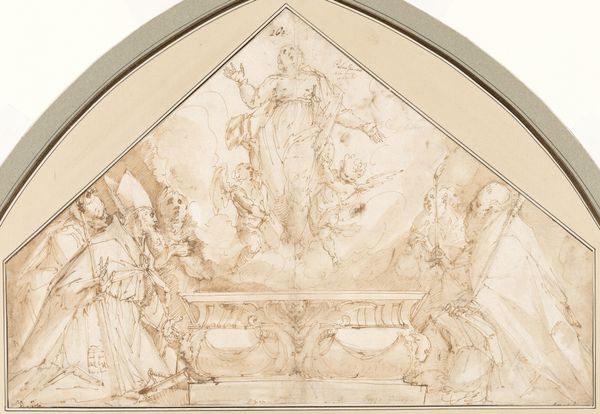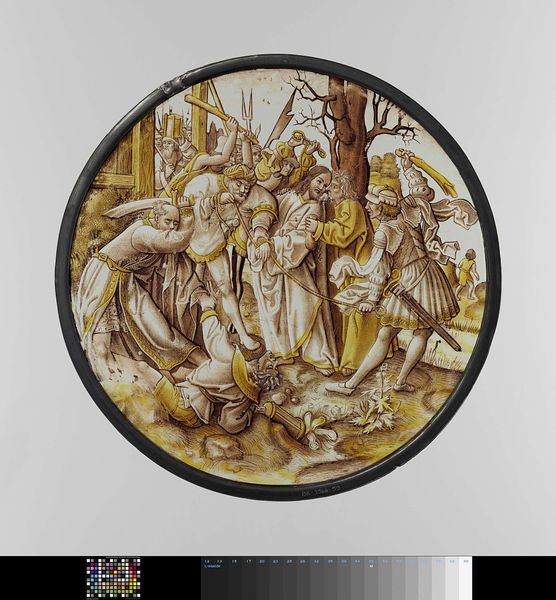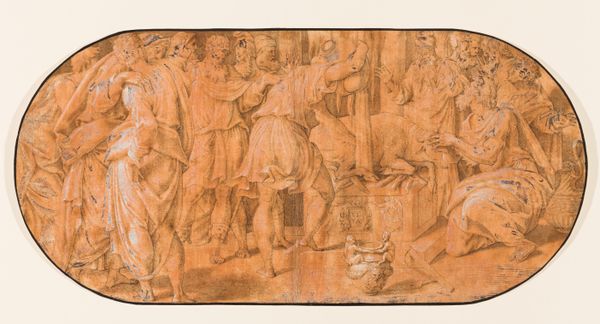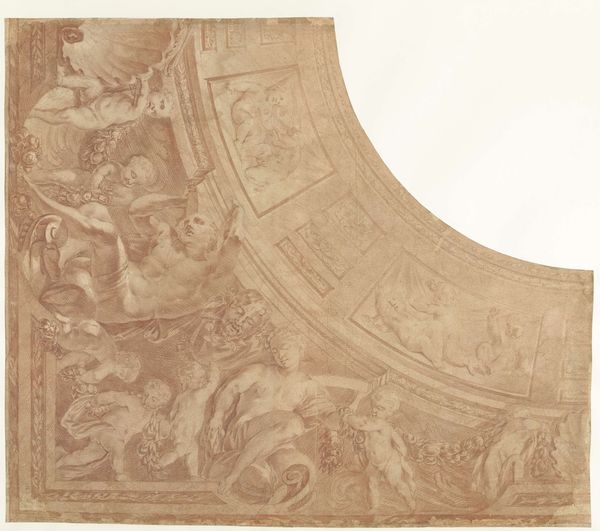
A pope consecrating a bishop: study for a lunette 1552 - 1627
0:00
0:00
drawing
#
drawing
#
figuration
#
line
#
history-painting
#
italian-renaissance
Dimensions: 220 mm (height) x 398 mm (width) (bladmaal)
Curator: This is "A Pope Consecrating a Bishop: study for a lunette," a drawing made sometime between 1552 and 1627 by Giovanni Battista Ricci, currently residing at the SMK in Copenhagen. Editor: My initial impression is one of formality, but also a kind of hesitant quiet. The sepia tones lend an aged, almost ghostly atmosphere to this ecclesiastical ceremony. Curator: Note the economy of line that still manages to articulate volumes and textures. The lunette shape in itself is significant—historically placed above doorways, suggesting threshold, passage. Consider, then, what "rites of passage" are visually represented. Editor: Absolutely, the performative element is striking. Who has access to the rite and who doesn’t? Where are the women? The image powerfully evokes the exclusivity of the Church's hierarchical power structures, with their elaborate rituals. The architecture and costumes denote control. Curator: Though seemingly flat, the architectural background uses subtle linear perspective that amplifies depth of space; compare with the almost flattened depiction of the figures that are arranged in the composition. See how they emerge and recede with varying degrees of detail? Editor: Exactly. It’s the suggestion of something deeper than simply a pictorial space. This composition is a potent reminder of the social landscape of early modern Europe and, even today, resonates in our ongoing discussions about social, political and religious power. It begs the question: Who gets to decide, who gets to participate, and who is relegated to the margins? Curator: Indeed. Though the artwork ostensibly depicts the Pope conferring power, there remains a structural openness. I am captivated by the relationship between positive and negative space, a stark reminder that our interpretations, though varied, depend on material form. Editor: This has highlighted not only how we experience artworks in radically different ways but also how these aesthetic experiences and social practices constantly intersect with our understanding of history.
Comments
No comments
Be the first to comment and join the conversation on the ultimate creative platform.

